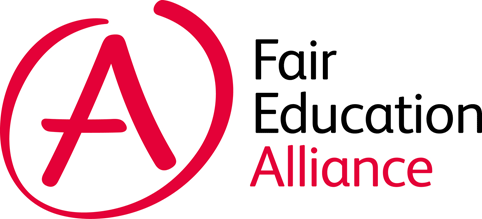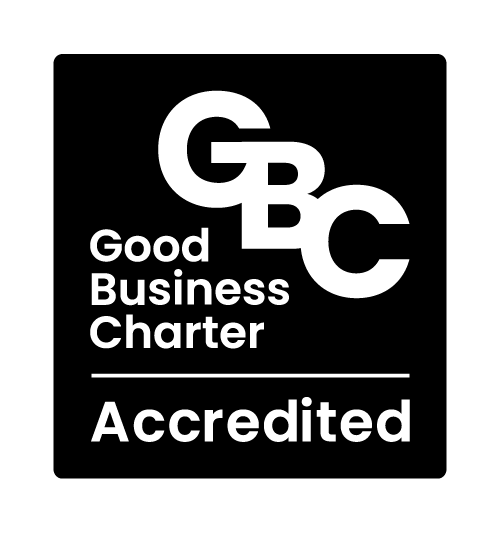Black History Month in the US – teaching about race when it could cost you your job.
Our mission is to help teachers teach controversial history, so the challenge of teaching the history of race in the USA is one we have been thinking about for some time. We are very excited to have launched a new programme to coincide with Black History month in the USA. This introductory program covering four centuries will be the first in a series.
This program is unique because it retells the history of the United States as two narratives: European American and African American. Students are encouraged to compare and contrast the two to understand how and why they diverge and converge. It’s the same approach that has allowed hundreds of teachers to tackle the history of Israel and Palestine without running the risk of adopting an ‘editorial’ position which might invite criticism from parents.
For UK readers I should add a little context, so you understand how high the stakes have become for educators in the US. In 25 out of 50 states, legislatures have passed laws or governors have issued executive orders banning the teaching of Critical Race Theory (CRT)1. The key idea in CRT is that American society and its structures are institutionally racist and therefore need to be changed. It is hardly surprising that school principals and classroom teachers approach the topic of Black History with extreme caution – where, for example does legitimate teaching about the Civil Rights movement in the 1960s end and banned teaching about CRT begin?
Education in the US is run at a local level by elected administrators, and education has become a significant issue in the ‘culture wars’ dividing Republicans and Democrats. The reality is that the teaching of CRT is more of bogeyman than something widespread in classrooms, but it is part of a bundle of concerns among parents who want more control over what is taught, about race, sexual orientation, and gender.
In writing this program about race in the USA we used the same process we first adopted when writing the history of Israel and Palestine. We read widely, come to a judgement on what is the mainstream historical narrative in each group, and then condensed that into a summary which can work in the classroom. We then send our draft scripts to teachers for comment. Publishing educational materials about Israel and Palestine is fraught with challenges (ask any major textbook publisher!) because this is educational territory heavily patrolled by advocates from both sides concerned about bias. However, what we have learnt is very encouraging. Neither side objects to the other side’s history being told provided that their history is told too. Once they recognise that we are genuinely trying to write their story as they would wish it to be told they forgive us if we don’t always correctly pronounce Arabic or Hebrew words. Neither side has questioned our authority to try to tell their history. We are hoping that the same applies to this new US program.
Taking away from the teacher the burdensome role of acting as ‘umpire of the truth’ is not the same as taking away their responsibility to facilitate the students’ learning about the impact of the history of race on American society today. That after all, is one of the reasons students enjoy learning history; they get to discover how the past has shaped the present. I’ve included below some of our classroom exercises which encourage a critical evaluation of evidence and challenge students to understand historical perspectives. Activity 1 asks students to analyse differences in historical perspective between different groups. Activity 2 asks students to analyse the continuity in perspective. Activity 3 asks students to analyse evidence of continuity and change over time.
Activity 1: Compare and Contrast two pieces of evidence from the USA in the last 1930s, early 1940s
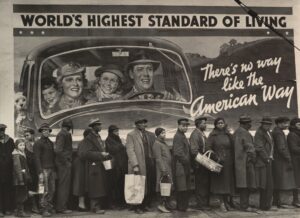
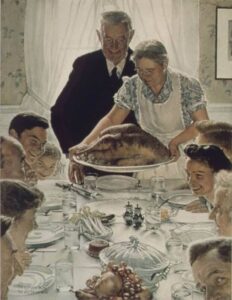
1.How are these two pieces of evidence similar?
2.How are these two pieces of evidence different?
3.What might account for the similarities and differences? Consider the purpose for what was made.
Activity 2: Compare and Contrast two paintings about historic events
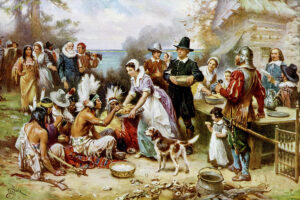
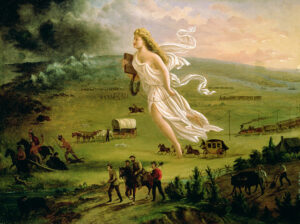
1.How are these two paintings similar?
2.How are these two paintings different?
3.What might account for the similarities and differences? Consider the purpose and timing.
Activity 3: Using evidence to explore continuity and change over a century
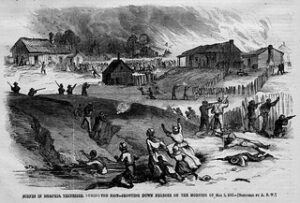
“I think last night was the worst night I ever spent…they were out there with instructions not to fire. They were fired on, they were hit, things were thrown at them. It was an extremely dangerous situation… And I think it was that close. If the tear gas hadn’t arrived in that last five minutes, and if these men hadn’t remained true to their orders and instructions, if they had lost their heads and started firing at the crowd, you would have had immense bloodshed, and I think it would have been a very tragic situation. …So to hear these reports that were coming in to the president and to myself all last night — when the situation with the state police having deserted the situation, and these men standing up there with courage and ability and great bravery — that was a very moving period in my life.”
– Attorney General Robert F. Kennedy, October 1 1962
1.How do these two pieces of evidence suggest a historical continuity between 1866 and 1962?
2.How do these two pieces of evidence suggest a historical change between 1866 and 1962?
3.If you were a historian in the future assessing the continuity and change in relations between European-Americans and African-Americans since the 1960s, what evidence would you look for?
All our experience confirms that the history classroom is the best place to tackle contentious topics because the alternative forums online are so much worse. Students enjoy the freedom to consider other historical viewpoints, they invariably rise to the intellectual and imaginative challenge, and they treat each other with a consideration and respect often missing from debates between adults. Some of the best historical debates I’ve witnessed have been between students from Jewish schools and Muslim schools in which the Jewish students have adopted the historical positions of Palestinians and the Muslim students those of Israelis.
Our aim is that this initiative will be a tool to help teachers right across the US teach about race with confidence. We hope that parents and politicians across the political divide will support a program which teaches students how to think and which encourages mutual understanding and respectful debate.
If you would like to see this program used in your children’s (or grandchildren’s!) school just let us know and we will make contact.
michael@parallelhistories.org.uk
